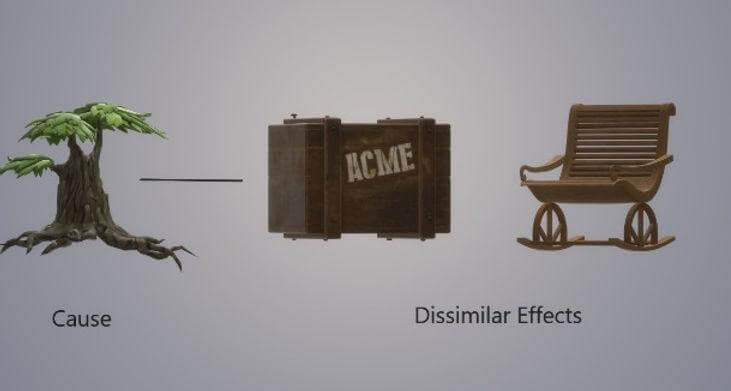Author: Randeep Singh / go to all Samkhya Karikas

Samkhya Karika 15 text:
Bhedaanaam parimaanaat samanvayaat shaktitah pravrtteh cha||
Kaarana-kaarya vibhaagaat avibhaagaat vaishvarupyasya ||
Bhedaanaam – difference, contrast exist
Parimaanaat – finite, quantifiable objects
Samanvayaat – due to similarity, sameness
Shaktitah – owing to the power
Pravrtteh – action of evolution
Cha – and
Kaarana-kaarya – cause and effect
Vibhaagaat – distinction, difference
Avibhaagaat – non-distinction, non-differentiation
Vaishvarupyasya – of the entire world
Samkhya karika 15 talks about the nature of Mula Prakriti – unmanifest state – as a cause from the perceived nature of its effects, the manifested form of Mula Prakriti. As per the cause and effect theory of Samkhya the nature of the effects is similar to its causes, as the effect always emerges from its cause, the nature of the cause – even if it cannot be seen like the Mula Prakriti – can be known by studying the nature of its effects.
Going by the above logic the pramana – proofs – of the existence and nature of the Mula prakriti can be known from the existence and nature of its effects which can be perceived as the manifested form of the objects of the universe.
Effects may be Dissimilar or Similar | Samkhya Karika 15
It is not necessary for the cause – Mula Prakriti – to be similar in look and nature with its effects, the objects which have evolved out of it. The nature of the objects of the manifested world is finite and very much quantifiable, this doesn’t mean that even its cause – Mula Prakriti – would also be finite and quantifiable in nature. This can be proved from the fact that a lot of evolutes of the manifested Prakriti look very different, distinct from each other and also from their cause i.e. the Mula Prakriti.
A table or chair – effect – made from the same wood – cause – look very different from each other and also distinct from the trunk of the tree – second level cause – from which they have been extracted. Secondly there is also present sameness or similarity between different object in the manifested universe: buttermilk and milk are hard to distinguish between if one only goes by their look.
Thus, all effects certainly have their cause even if it is not visible. So, the manifested world – Prakriti – is a proof of the existence of its cause – Mula Prakriti – even though this cause is not visible to us. In the example of milk and the buttermilk, effects, we are aware of their difference but still acknowledge their single cause, the cow, which is not visible along with the effects.
On similar lines the cause of the cow goes back to the grass and then to the earth. These causes are not visible at once with the effect but we know they do exist. The proof of their existence is their effects which look very dissimilar (table and chair) from each other and some similar too each other (milk and buttermilk).
This karika is trying to explain that every effect present in the world has to have a cause. Sometimes it’s very difficult to establish the cause of an effect because it doesn’t look similar, in nature and appearance, to the effect. The cause can be very subtle or look different than the effect as perceived or experienced by us.
Here we are being apprised of the fact that the entire world is the effect the cause of which is the coming together of the Mula Prakriti and the Purusha from which everything that makes up the world has evolved. Some of these effects resemble the cause to some extent and some do not. Still just the presence of these similar, or dissimilar effects is the proof of the existence of its cause, the Mula Prakriti.
